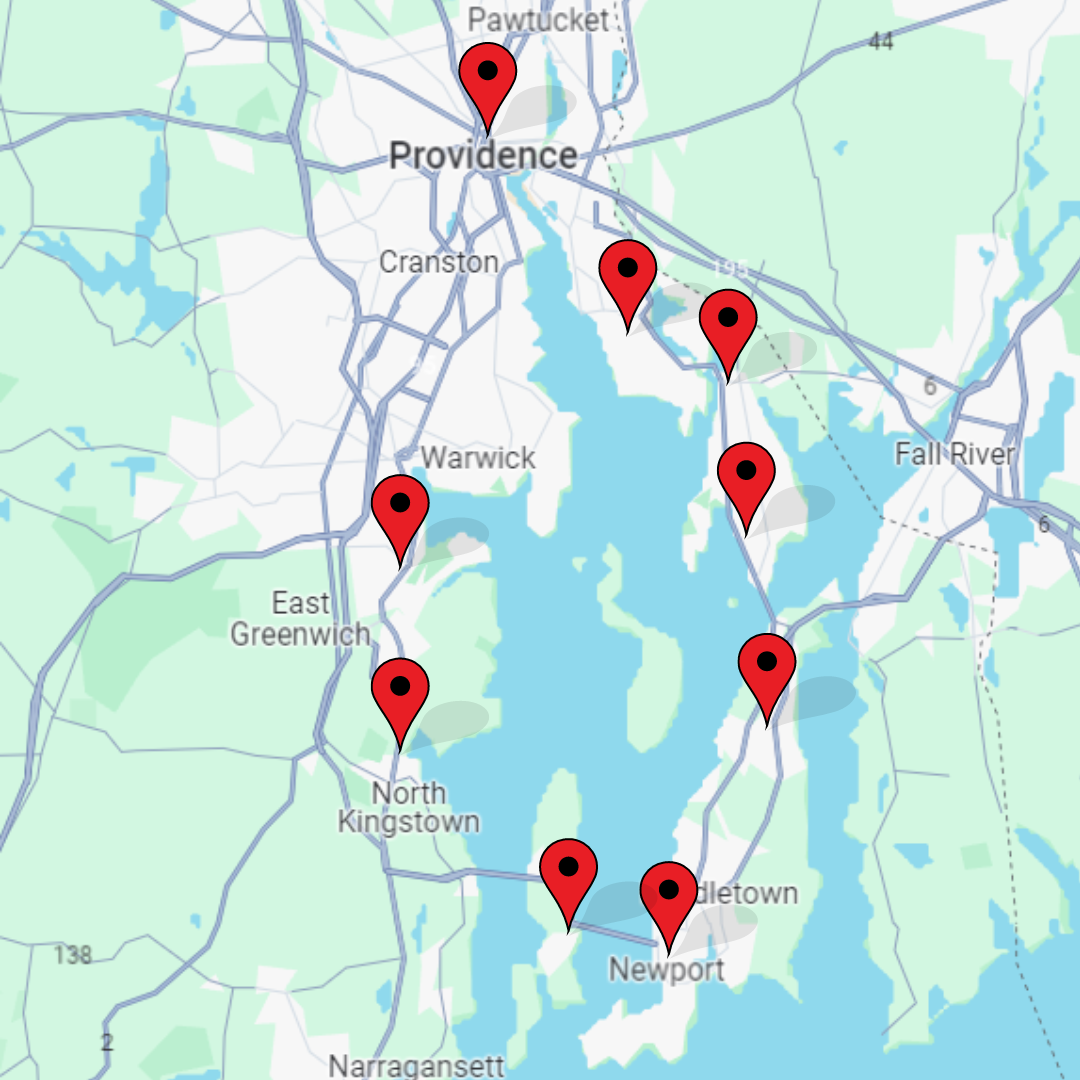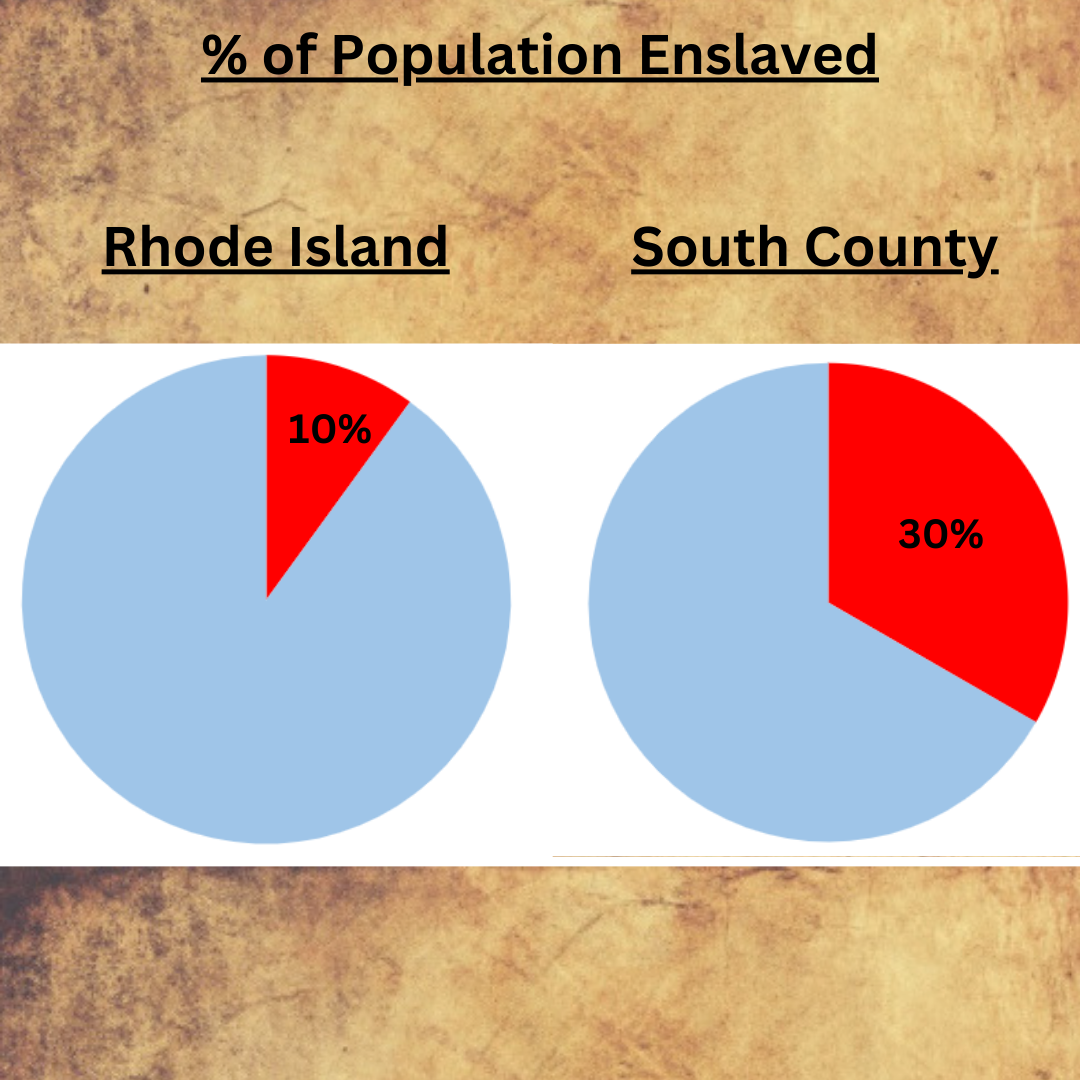From almost the moment Rhode Island was founded, indigenous war captives worked for the colony's earliest settlers without pay. Then, in the 18th century, Rhode Island's relationship with slavery deepened when it began playing a dominant role in the American slave trade.
29 minutes | 1638 - 1775
Hear About:
📜When slavery started in Rhode Island.
📜How Rhode Island dominated the slave trade more than any other American colony.
📜When South County was home to the largest slave plantations in all New England.

Roger Williams
Although initially reluctant towards enslaving war captives, the founder of Rhode Island went on to show his support for the practice during the Pequot War and following King Philip's War.
The Updike Family of Cocumscussoc
Beginning with their relative, Richard Smith, the Updike family, like many other Narragansett Planter families throughout South County, had numerous enslaved people working on their massive plantation in North Kingstown.
Prince Updike
For years, Prince Updike worked on the Updike plantation in Cocumscussoc (known as Wickford today) but eventually moved to Newport upon gaining his freedom.

Rhode Island Slave History Medallions
Situated throughout Rhode Island are 12 slave medallions. These plaques are part of a statewide public awareness program aiming to label historic sites connected to the history of slavery in Rhode Island. Medallions are located in towns across Rhode Island, including Providence, Warren, Bristol, Portsmouth, Newport, Jamestown, North Kingstown, and East Greenwich.

Smith's Castle | North Kingstown, RI
By the early 18th century, the plantation that Smith's Castle was built on spanned all the way from present day Hamilton to Quidnessett. The plantation's numerous farms produced a wide range of good that were eventually sold in the West Indies. Unfortunately, these farms were worked by numerous enslaved people and the goods they produced were part of a slave trade that Rhode Island dominated.





Prince Updike Grave | Newport, RI
After gaining his freedom, Prince Updike went on to work as a chocolate grinder in Newport. He was able to make enough money that by the time of his death in 1781 the wealth left by his estate afforded him a handsome gravestone. You can see that gravestone by visiting God's Little Acre in Newport.

The Triangle Trade
During the 18th century Rhode Island profited greatly from the Triangle Trade. It started with livestock & crops being sent from Narragansett Country (present day South County) to coastal towns like Newport & Bristol. Then, merchants would take the livestock, crops, and Rhode Island rum to West Africa. In West Africa, the rum was sold off and slaves were purchased. Then, the livestock, crops, and newly acquired slaves were sold off or traded in the Caribbean Islands for molasses. Finally, the molasses and any enslaved people that were not sold in the Carebbean would be brought back to Rhode Island, both of which would be used to help the cycle continue.





Rhode Island's Dominated the American Slave Trade
Just as it is today, Rhode Island made up a small part of the American colonies in the 18th century. However, the colony's economy was so reliant on the slave trade that it managed to be responsible for about 70% of the slave trading activities completed by the American colonies.

Rhode Island Had a Higher Percentage of Slaves Than Any Other New England Colony
By 1750, the New England Colony with the second highest percentage of slaves as a percentage of its popluation was Connecticut at just 3%. Therefore, that fact that 10% of the Rhode Island population was enslaved is quite shocking. The reason for this was two-fold. First, Rhode Island's deep ties to the slave trade made enslaved people highly accessible to those who wished to rely on their free labor. Second, South County was filled with large plantations that relied heavily on slave labor.
Rhode Islander's funded a slave voyage in 1649
In 1649, a small group of Rhode Island colonists financed a trans-Atlantic voyage to West Africa to trade for African captives. These captives were eventually sold in the West Indies. However, since there are no records of these ships departing from or returning to Rhode Island many do not consider it to be the colony's first involvement in the slave trade.
- Brethren by Nature: New England Indians, Colonists, and the Origins of American Slavery by Margaret Ellen Newell
- Dark Work: The Business of Slavery in Rhode Island by Christy Clark-Pujara
- The Notorious Triangle: Rhode Island and the African Slave Trade, 1700-1807 by Jay Coughtry
- A Cocumscussoc Reader by Robert A. Geake
- VIDEO: 350th Anniversary Speaker Series: "Setting the Record Straight" by Tim Cranston
- VIDEO: 350th Anniversary Speaker Series: "Broke the Ice" by John Dower
- WEBSITE: Slave Voyages Database
- WEBSITE: Rhode Island Slave History Medallions
- RI’s Colonial Legal System 1603 to 1757 by Mark Burnham
- Why A Slave Medallion at Smith’s Castle? An Address by Robert A. Geake
- Rhode Island and the Slave Trade by J. Stanley Lemons
- The Narragansett Planters by the Cocumscussoc Association
- Brief Biographies of a few of the Enslaved at Cocumscussoc / Smith Castle by the Cocumscussoc Association
- Governor’s 1708 Report Tells Where the First Black Enslaved People Who Arrived in Rhode Island Came from and About the Arrival of the First Slave Ship from Africa by Christian McBurney